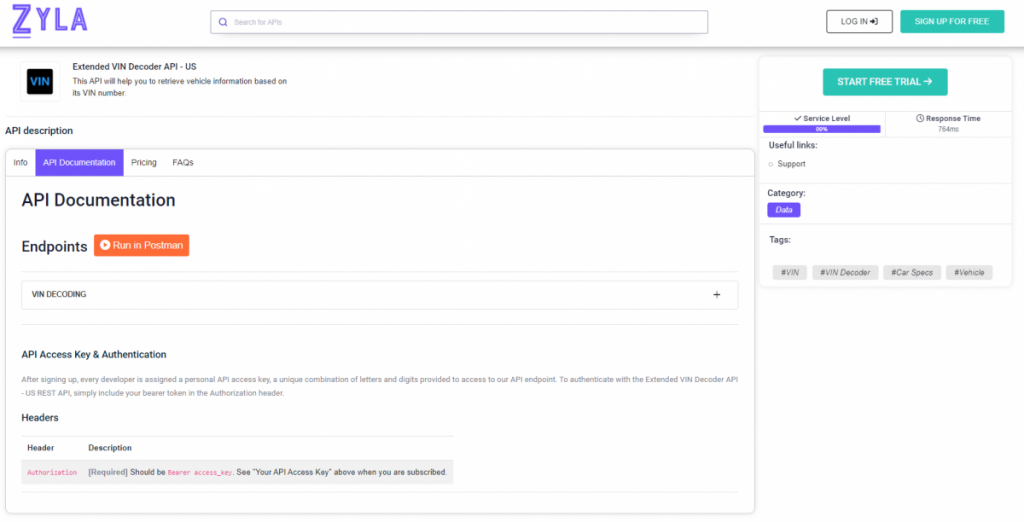Embarking on the journey to understand Vehicle APIs is like decoding the intricate language of the automotive digital ecosystem. This guide aims to explain What Is A Vehicle API, shedding light on their essence, functionalities, and the transformative impact they have on the modern automotive landscape.

Decoding The Language: What Is A Vehicle API?
At the core of this guide lies the fundamental question: What exactly Is A Vehicle API? These APIs, or Application Programming Interfaces, serve as digital bridges, enabling seamless communication between different software applications within the automotive ecosystem. In simpler terms, they facilitate the exchange of data and functionalities among various components, unlocking a new level of connectivity and efficiency.
Navigating The Ecosystem: Key Functionalities Of Vehicle APIs
The functionalities of Vehicle APIs extend far beyond basic communication. Firstly, these APIs provide a standardized way for different software systems to interact with vehicle-related data. This could range from basic information like make and model to more intricate details such as engine diagnostics, GPS coordinates, and real-time performance metrics.
Secondly, the versatility of Vehicle APIs allows for their integration into a myriad of applications. Whether it’s a mobile app providing location-based services, a diagnostic tool for vehicle health monitoring, or a platform for fleet management, Vehicle APIs serve as the linchpin, fostering interoperability and enhancing the overall functionality of diverse applications.
Driving Connectivity: Applications Of Vehicle APIs
As we delve into functionalities, it’s crucial to explore the practical applications of Vehicle APIs. Firstly, consider their role in automotive telematics. Vehicle APIs empower telematics systems to gather, process, and transmit real-time data, offering insights into driver behavior, vehicle performance, and even enabling features like remote diagnostics and predictive maintenance.
Moreover, Vehicle APIs play a pivotal role in the emerging realm of connected vehicles. They facilitate communication between a vehicle’s onboard systems and external platforms, enabling features such as remote start, navigation assistance, and even over-the-air software updates. This level of connectivity transforms vehicles into intelligent, data-driven entities.
Additionally, the integration of Vehicle APIs in automotive retail platforms enhances the customer experience. From accessing detailed vehicle information to streamlining the purchase process, these APIs empower dealerships and online platforms, fostering a more transparent and efficient buying journey.
Navigating Integration: How To Harness The Power Of Vehicle APIs
To fully leverage the power of Vehicle APIs, businesses must navigate the integration process strategically. Firstly, identifying specific objectives—whether it’s optimizing operations, enhancing customer experiences, or delving into data analytics—guides the selection of the most relevant APIs for integration.
Security considerations are paramount in this journey. Vehicle APIs often deal with sensitive information, and implementing robust encryption measures is essential to safeguard data. Adhering to data protection regulations not only ensures compliance but also fosters trust among end-users, a crucial factor in the success of integrated systems.
Lastly, staying informed about updates and advancements in the field is vital. The automotive landscape is dynamic, with continuous improvements and new features in Vehicle APIs. Regular assessments and updates guarantee the longevity and relevance of integrated systems.
Driving Towards The Future: The Evolving Landscape Of Vehicle APIs
In conclusion, Vehicle APIs emerge as integral components in the fabric of the modern automotive landscape. As businesses and developers embrace the potential of these APIs, they drive towards a future where connectivity, efficiency, and innovation redefine how we interact with vehicles. This guide serves as a compass, navigating through the intricacies of Vehicle APIs and illuminating a path towards a more connected and intelligent automotive ecosystem.
Check Extended VIN Decoder API – US
In today’s data-driven world, businesses in various industries are constantly seeking ways to gather and utilize valuable information to enhance their operations and decision-making processes. The Extended VIN Decoder API – US emerges as a powerful tool that empowers businesses to unlock the hidden insights embedded within Vehicle Identification Numbers (VINs), transforming them into actionable data that drives informed decisions and improves operational efficiency.

The Extended VIN Decoder API – US goes beyond mere VIN decoding, providing businesses with a comprehensive gateway to a vast repository of vehicle data. With a single API call, businesses can retrieve a wealth of information, including:
- Vehicle Specifications. Uncover essential details such as make, model, year, engine size, transmission type, fuel type, and more.
- Equipment and Features: Discover the vehicle’s unique features, options, and equipment packages, gaining a holistic perspective on its capabilities.
- Safety Recalls. Stay informed about any outstanding safety recalls or potential issues with the vehicle, ensuring the safety of customers and enhancing risk management strategies.
- Maintenance History. Trace the vehicle’s maintenance history, including past repairs, service records, and mileage updates, providing valuable insights into the vehicle’s condition and ensuring informed decisions about its purchase or sale.
- Manufacturing Details. Gain insights into the vehicle’s production plant, assembly date, and country of origin, expanding understanding of its provenance and characteristics.
All You Need To Do To Make Use Of It Is:
- First, go to Extended VIN Decoder API – US and click the “START FREE TRIAL” button.
- You will be able to access the API once you have registered with the Zyla API Hub.
- Use the API endpoint “VIN DECODING”.
- Click the “test endpoint” button to make an API call and examine the results on your screen.
For example, if you add a VIN number like 479, it will provide you with a response similar to this:
{
"brandName": "NISSAN",
"modelName": "Maxima",
"regionName": null,
"condition": null,
"msg": null,
"cacheTimeLimit": 120,
"data": {
"AirBagLocFront": "1st Row (Driver and Passenger)",
"BodyClass": "Sedan/Saloon",
"DisplacementCC": "3000",
"DisplacementCI": "183.0712322841",
"DisplacementL": "3",
"Doors": "4",
"EngineConfiguration": "V-Shaped",
"EngineCylinders": "6",
"EngineManufacturer": "Nissan",
"EngineModel": "VQ30",
"FuelTypePrimary": "Gasoline",
"Make": "NISSAN",
"MakeID": "478",
"Manufacturer": "NISSAN MOTOR COMPANY, LTD",
"ManufacturerId": "996",
"Model": "Maxima",
"ModelID": "2302",
"ModelYear": "1999",
"OtherRestraintSystemInfo": "3-Point manual belts",
"PlantCity": "YOKOSUKA CITY",
"PlantCompanyName": "Oppama Plant",
"PlantCountry": "JAPAN",
"PlantState": "KANAGAWA",
"SeatBeltsAll": "Manual",
"VIN": "JN1CA21DXXT805880",
"VehicleDescriptor": "JN1CA21D*XT",
"VehicleType": "PASSENGER CAR",
"RecallInfo": []
}
}
Finding APIs is straightforward thanks to Zyla Labs, a marketplace with top-notch service. Among the more than 1200 APIs that are available, you can narrow your search by using a category, word, or programming language. Each API is fully described in the marketplace, including the price, accompanying files, and terms of service.
Want to learn more? Read Fueling Progress: A Vehicle Information AP

